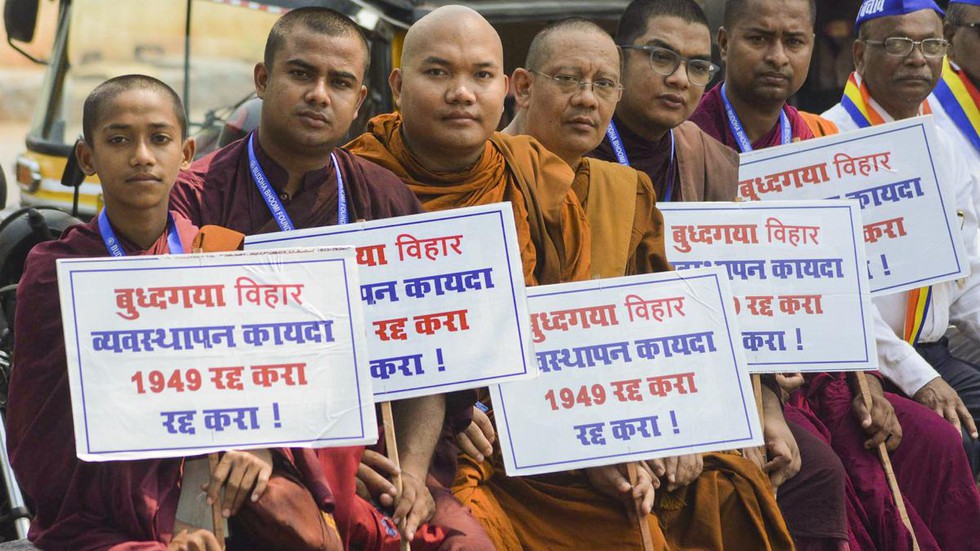What is the Bodh Gaya Temple Act (BTA), 1949?
- The Act established an eight-member management committee to oversee the temple.
- Equal representation was given to Hindus and Buddhists, but the District Magistrate (DM) was made the ex-officio chairperson.
- Since the DM historically came from the Hindu community, this created a perceived Hindu majority in temple administration.
- Buddhist organizations have long demanded full control over the temple, calling it Bodh Gaya Mahavihara.
Historical Background of the Dispute
- Ancient Period: Emperor Ashoka built the original temple at Bodh Gaya in the 3rd century BCE. It remained a Buddhist religious center until the Pala dynasty.
- Medieval Period (13th Century):
- Bakhtiyar Khilji’s invasion led to the decline of Buddhism in India.
- 1590: A Hindu monk established the Bodh Gaya Mutt, leading to Hindu control over the temple.
- Colonial Period: British-era records refer to Bodh Gaya as a Hindu-controlled site.
- Post-Independence (1949): The Bihar Assembly passed the BTA to formalize temple management, transferring control to the new committee instead of a single Hindu authority.
Government Interventions
- The BTA, 1949, was passed to resolve ongoing disputes between Hindu and Buddhist religious heads.
- 2013 Amendment: The Bihar government amended the rule, allowing the ex-officio chairman (DM) to be from any faith.
- Early 1990s: Bihar CM Lalu Prasad Yadav drafted the Bodh Gaya Mahavihara Bill, aiming to transfer temple management to the Buddhist community.
- The Bill prohibited Hindu idol immersions near the temple and Hindu marriages inside the premises.
- However, it was never passed and remains in cold storage.
About the Mahabodhi Temple Complex
- The Bodh Gaya Temple is one of the four most sacred sites of Buddhism, marking the location where Buddha attained Enlightenment (Bodhi) along with:
- Lumbini (Buddha’s birthplace)
- Sarnath (Buddha’s first sermon)
- Kushinagar (Buddha’s parinirvana
- Location: Bodh Gaya, Bihar, on the banks of the Niranjana River.
- The temple is one of the oldest surviving brick structures in India.
- Originally built by Ashoka in the 3rd century BCE, the present structure dates to the 5th–6th centuries CE.
- UNESCO World Heritage Site since 2002.
Architectural Features
- Grand Temple: A 50-meter-high pyramidal shikhara (tower) with intricate engravings and arch motifs.
- Four smaller towers, each topped with an umbrella-like dome, surround the central temple.
- Sacred Bodhi Tree: Believed to be a direct descendant of the original tree under which Buddha attained Enlightenment.
- Vajrasana (Diamond Throne): A stone slab marking the exact spot where Buddha meditated.
- Temple Shrine: Houses a yellow sandstone statue of Buddha, encased in glass.
- The 8-hectare complex includes ancient shrines and modern Buddhist structures built by devotees.
